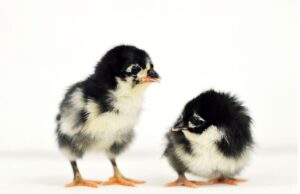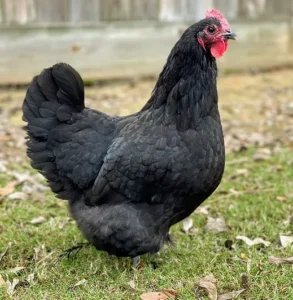Australorp Chickens: Exploring Their Fascinating World
Welcome to our comprehensive guide on Australorp chickens! These remarkable birds have a rich history and unique characteristics that make them a favorite among poultry enthusiasts worldwide. Learn everything you need to know about Australorp chickens, from their origins to their care and beyond. The Australorp chicken breed has its roots in Australia, where it was developed in the late 19th century. Bred from a combination of Orpington and other heritage breeds, Australorps quickly gained popularity for their exceptional egg-laying abilities and gentle demeanor. Today, they are celebrated as one of the most prolific egg-laying breeds in the world.
Egg-cellent Insights: Australorp Eggs and Production
Size
Australorp eggs are typically medium to large sized.
Color
Australorp eggs are brown.
Production per year
Australorp hens are renowned for their prolific egg-laying capabilities. On average, Australorps can lay between 250 to 300 eggs per year, making them a valuable addition to any backyard flock.
When do Australorp chickens start laying eggs?
Australorp hens typically begin laying eggs around 5 to 6 months of age, depending on various factors such as diet, environment, and genetics.
Australorp Chicken Breed Characteristics
Temperament Traits: Gentle Giants of the Poultry World
Known for their calm and docile temperament, Australorp chickens are beloved for their friendly disposition and easygoing nature. They are highly sociable birds that enjoy human interaction and can make excellent pets for families and individuals alike. With proper handling and care, Australorps can become affectionate companions and charming additions to any backyard flock.
Taming Australorp Chickens: Building Trust and Bonding
Taming Australorp chickens is a rewarding experience that requires patience and consistency. Spend time with your Australorps regularly, offering treats and speaking to them in gentle tones. With positive reinforcement and gradual socialization, Australorps can become tame and friendly towards their caretakers, enhancing the bond between chicken and human.
Ideal Flock Size: Finding the Perfect Balance
When it comes to flock size, Australorp chickens thrive in both small and large groups. A flock of 4 to 6 Australorps is considered ideal for backyard enthusiasts, providing a balance between companionship and space. However, Australorps can also adapt well to larger flocks, provided they have ample space to roam and establish their social hierarchy.
Space Requirements: Room to Roam and Explore
Australorp chickens appreciate ample space to roam and explore their surroundings. Provide at least 4 square feet of coop space per bird, along with access to a secure outdoor run or free-ranging area. This allows them to exhibit natural behaviors such as foraging and dust bathing, promoting their physical and mental well-being.
Social Dynamics: Getting Along with Others
Australorp chickens are generally sociable birds that get along well with other chickens. Introduce them to new flock members gradually and monitor their interactions to ensure a smooth integration. With proper introductions and supervision, Australorps can form strong bonds with their feathered companions, fostering a harmonious flock environment.
Appearance Insights: Beauty in Simplicity
Australorp chickens are known for their sleek and glossy black plumage, which shimmers with hints of green and purple in the sunlight. They have a medium-sized body with a broad, deep chest and a relatively upright stance. With their elegant appearance and regal demeanor, Australorps are a sight to behold in any flock.
Feeding Australorp Chickens: Nutritional Needs from Birth to Egg Laying
Chick Starter Feed: A Solid Foundation for Growth: Birth to 8 Weeks
- Starter Feed: From the moment Australorp chicks break free from their shells, they depend on specially formulated chick starter feed to fuel their growth and development. This feed is enriched with essential nutrients like protein, vitamins, and minerals, crucial for supporting their rapid growth during the early stages of life.
- Protein Content: With a protein content ranging from 18% to 20%, chick starter feed provides the building blocks necessary for strong muscles, healthy bones, and robust immune systems in these young chicks.
- Feeding Frequency: Australorp chicks have voracious appetites and high metabolic rates, requiring frequent access to feed to support their rapid growth. Keep chick starter feed available to them at all times, allowing them to eat as much as they need to satisfy their hunger and fuel their growing bodies. This ad libitum feeding approach ensures that they receive the nutrients they need to thrive without any restrictions.
- Supplemental Heat: During their early weeks of life, Australorp chicks require a warm and cozy environment to thrive. Providing supplemental heat, such as a heat lamp or brooder, helps maintain their body temperature and aids in digestion. Consistent warmth is crucial for their overall health and well-being, preventing chilling and promoting optimal growth and development.
- Fresh Water: In addition to their feed, ensure that fresh, clean water is readily available to Australorp chicks at all times. Use shallow waterers to prevent accidental drowning, and change the water regularly to maintain cleanliness. Proper hydration is essential for their overall health and well-being, supporting proper digestion, nutrient absorption, and temperature regulation.
Transitioning to Grower Feed: Supporting Continued Growth: 8 Weeks to Point of Lay
- Grower Feed Introduction: Around 8 weeks of age, as Australorp chicks continue to grow and mature, it’s time to transition them to grower feed. This feed contains slightly lower levels of protein compared to chick starter feed but still provides the essential nutrients needed for continued growth and development.
- Protein Content: With a protein content ranging from 16% to 18%, grower feed supports steady growth without promoting excessive weight gain in these growing chicks.
- Feeding Schedule: Offer measured quantities of grower feed to your Australorp chicks, ensuring they have enough to eat without overfeeding. Monitor their appetite and growth closely, adjusting feeding amounts as needed to prevent wastage and maintain healthy growth. A balanced diet supports their overall health and well-being, setting the stage for successful egg production in the future.
- Healthy Treats: Introduce occasional treats such as finely chopped greens, fruits, or mealworms to provide enrichment and variety to your Australorp chickens’ diet. These treats offer additional nutrients and help keep your chickens happy and content.
Preparing for Egg Production: Transitioning to Layer Feed: Point of Lay Onward
- Layer Feed Transition: As Australorp chickens approach the point of lay, typically around 18 to 20 weeks of age, it’s time to transition them to layer feed. Layer feed is specially formulated to provide the essential nutrients needed for egg production, including higher levels of calcium for strong, healthy eggshells.
- Calcium Supplementation: Alongside layer feed, provide free-choice calcium supplements such as crushed oyster shells or limestone grit to ensure they have access to the extra calcium needed for eggshell formation.
- Feeding Routine: Maintain a consistent feeding routine, offering layer feed and calcium supplements to your Australorp hens regularly. Keep a close eye on their egg production and adjust feed quantities as needed to support optimal laying performance.
By providing a well-balanced and nutritious diet tailored to each stage of their development, you can support the healthy growth, development, and eventual egg-laying success of your Australorp chickens. Consistent access to quality feed, fresh water, and appropriate supplements is key to their overall health and productivity throughout their lives.
Strengths and Weaknesses: Assessing the Australorp Chicken
Australorp chickens boast numerous strengths, including their prolific egg-laying abilities, gentle temperament, and adaptability to various environments. They are excellent foragers and thrive in both backyard and farm settings. However, like any breed, Australorps may have weaknesses such as susceptibility to certain diseases and the potential for broodiness in some individuals. Understanding these strengths and weaknesses is essential for successful care and management of Australorp chickens.
Embracing the Charm of Australorp Chickens
Australorp chickens are a versatile and beloved breed known for their outstanding egg production, gentle temperament, and striking appearance. Whether raised for their eggs, companionship, or exhibition qualities, Australorps continue to captivate poultry enthusiasts around the world. With proper care, understanding, and appreciation for their unique characteristics, Australorp chickens are sure to bring joy and satisfaction to those who have the pleasure of raising them.


